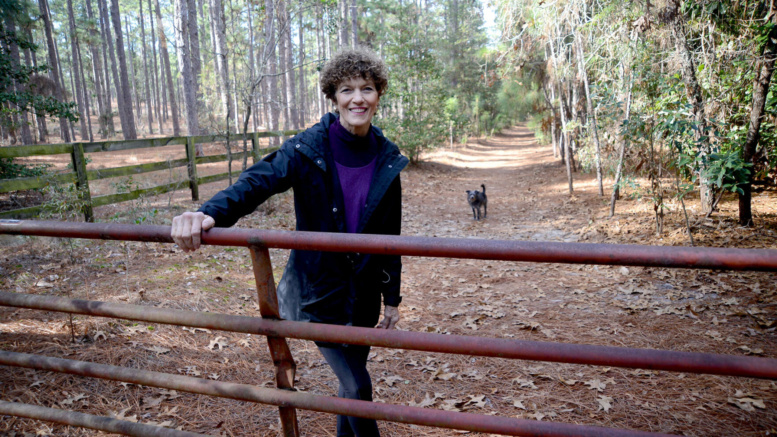By ANA RISANO
Insider Staff Writer
Southern Pines hasn’t been paved over to put up a parking lot, but it does have a yellow hotel, several boutiques and a swinging hot spot or two.
And while the trees haven’t been reduced to a tree museum, community residents have felt growing pains as swaths of forested land have given way to new homes and commercial destinations over the past few years.
The resort town that Southern Pines began as over 130 years ago has shifted into a bustling microcosm of urban life. The growth has been felt — and seen — in the last few years with expansions in all sectors: residential, commercial and office.
Several long-discussed projects have come to fruition in the last 12 months, like the Target-anchored shopping center off Morganton Road. With the main components of that development nearing completion, it has left the community wondering what’s coming next.
Popularity Spurs Growth
Southern Pines — often described as charming and small — has around 17,000 people, according to the 2023 population estimates by the US Census Bureau. At the start of the 21st century, the population was just under 11,000.
Part of the growth came from the expansion of Fort Liberty, then Fort Bragg, in 2011. The base absorbed Forces Command and the Army Reserve Command from Fort McPherson in Georgia. Today, the base employs about 57,000 military personnel and 11,000 civilians, making it the nation’s largest Army installation.
Many of those new personnel have chosen to live in Moore County. Apartment complexes and starter homes have come to dominate the residential market with so much interest in the area. According to data from the Planning Department in December, almost 1,200 apartment units are either under construction or planned.
The construction of 240 units for the Hawthorne at Southern Pines development is planned for the northwest side of the Air Tool Drive and U.S. 1 intersection. The 276 Patrick’s Pointe units are under construction and can be seen from U.S. 1 heading north.
Also planned are 44 units in Penick Village, a senior living community, and 40 buyable units with the New York Place development off South Bennett Street. Along Morganton Road, 300 units at Morganton Park North Apartments and 269 units at Overlook at Pine Ridge are underway.
At various town meetings, residents have spoken out about the dramatic changes along Morganton Road, watching the once heavily timbered property turn into shopping, apartments and professional offices.
For residents, the changes have seemed to come out of nowhere, but that area has been identified for large-scale development for decades. The town first adopted a highway corridor overlay in 1989 to set standards for development near the roadway. It later adopted the Morganton Road overlay, designed to “promote mixed-use development that reflects the town’s character and is compatible with surrounding residential neighborhoods” and “avoid strip commercial development and disconnect land use patterns.”
But as longtime resident and retired veterinarian Barbara Sherman pointed out at a council meeting in November, there is a difference between requiring detailed landscaping and preserving an ecosystem.
Southern Pines’ Landscape
Sherman has lived in Southern Pines for about 30 years. She is the former owner of a property known in town as the Whitehall Tract. It is 157 acres of preserved pine forest that she sold to the town for $1.6 million at the end of 2020. It is now part of the town’s park system.
She has emphasized a need to preserve the town’s natural character as development has changed Southern Pines’ landscape. But she wants to see more than the trees saved.
“Protecting the pines is a focal point because the great old pines are the spokesmen for the entire ecosystem,” Sherman said in an interview with The Pilot. “But it’s a very remarkable, complex ecosystem with a wide range of flora and fauna attached to it.”
The town’s namesake is the hardy longleaf pine. Those trees exist mainly in pine savannas, which are unique, biodiverse habitats maintained by fire and that are home to several rare and threatened species, like pyxie moss and red-cockaded woodpeckers.
Longleaf pines dominated the southeast United States from Virginia to Texas until over-exploitation about 150 years ago. The trees were identified in the late 19th and early 20th century as a source of timber, tar and turpentine for ship construction and waterproofing. The tar and turpentine were derived from pine sap.
Today, about 5 million of what was over 90 million acres remain in the Southeast. The forests were at a historic low two decades ago, making up just over 3 million acres. Weymouth Woods Nature Preserve is home to the oldest-known living longleaf pine — over 470 years old.
The town made strides in the latter half of 2024 to implement code changes that would preserve pockets of natural areas. Those changes were suggested in the 2040 Comprehensive Plan, a guiding document for future growth.
The proposed tree protection plans would implement measures early in the development process to reduce the amount of vegetation cleared from a site. But, following a recent change to state laws, the town is taking more time to re-examine the proposal and see what comes with the reconvening state legislature in the new year.
Sherman said she likes the proposed tree protection plans but wants to see a broader scope to protect the ecosystem.
“Couldn’t we come up with a compromise to do a better job protecting this ecosystem and respecting it?” she asked. “Not shut our eyes to the obvious necessity for growth and development in Southern Pines. It seems somewhat inevitable to some degree. But we have the ability, we being the people, have the ability to define it in a way.”
In 2023, residents had an opportunity to define the town’s future when the land use plan was in the drafting phase. Because of feedback, the plan includes several policies relating to protecting green spaces, linking trails, protecting old growth trees, and minimizing the impact of development on the environment.
Planning Director BJ Grieve said that plan has been working in several ways, with various code changes now established to help keep the town “Southern Pines-y.”
What’s Next
The Planning Department receives email, walk-in and telephone inquiries every day about what kinds of development can happen on certain properties — even if it’s not for sale.
Grieve said commercial developers are most interested in locations with high visibility and high accessibility, such as along U.S. 1 and U.S. 15-501. Each road has patches of untouched land bordered by mid-sized developments, like around The Fresh Market shopping complex.
Other areas receiving attention lately are the Pennsylvania Avenue corridor, which cuts through downtown and connects to residential streets, and near the Moore County Airport.
“The area around the airport,” Grieve said, “there’s a tremendous amount of acres there with great access — great sewer, great water, no steep slopes, no wetlands. It’s all very developable. It’s by the airport; it’s a major crossroads. The pieces are all there.”
While the town does not play a role in determining what tenants come to Southern Pines, Grieve said the future land use plan and the town’s zoning map designate areas for certain types of development, like residential, commercial or industrial.
The land use plan includes a general framework map that marks areas to preserve, strengthen, enhance and transform. The area around the airport is marked as a growth priority to transform and strengthen as a center for retail, office and residential development.
The framework map also notes properties with “Safe Harbor” agreements around the airport — voluntary agreements between landowners and the U.S. Fish and Wildlife Service to protect habitat suitable for the threatened red-cockaded woodpecker. That species was recently downlisted from endangered because it’s no longer in danger of extinction across its entire range.

The Safe Harbor Program was established in 1995 to help maintain forests for red-cockaded woodpeckers and reduce federal regulations from the Endangered Species Act on private land.
The landowner is only responsible for the number of woodpeckers on the property at the time of enrollment. If more birds move into an area, the landowner would not need to adhere to additional restrictions. And if the land changes hands, the new owner can choose to enter into the previous agreement, enter into a new agreement, or not participate in the program.
A main aspect of the program is that it allows landowners to develop their property while preserving sections of old growth longleaf pines relied upon by the birds. Some properties in the program may only have one or two suitable trees.
Grieve called properties with Safe Harbor agreements “yellow flags” for development, with potential green flags underneath.
From the town’s perspective, he said knowing which areas are in the program gives the Planning Department a heads up on what to discuss with interested parties. He said part of a planner’s job is to identify all constraints and opportunities on a site. That includes referrals to outside agencies that conduct habitat assessments.
Thinking back to the proposed tree protection plans, Grieve said it would work in conjunction with areas that have Safe Harbor agreements because the suggested code includes a list of areas to protect in order of priority. At the top of the list are “significant natural resource areas,” like red-cockaded woodpecker habitat.
“Part of the balance that we are always trying to achieve with projects like (tree protection plans) is balancing private property rights and value of land to the property owner with seeing the community’s interest in tree protection and quality growth,” Grieve said.
Sherman is but one of many residents who have shared their interest in protecting the natural environment in Southern Pines at various council meetings and town workshops. But she is also aware of the balance Grieve mentioned.
“I think most people wouldn’t argue with the idea of preserving (land),” Sherman said. “But does that mean that you want to give up a big wonderful shopping mall for the trees? How much do you want to give up? So it is a compromise, I think. We need to raise awareness.”
Contact Ana Risano at (910) 585-6396 or ana@thepilot.com.








